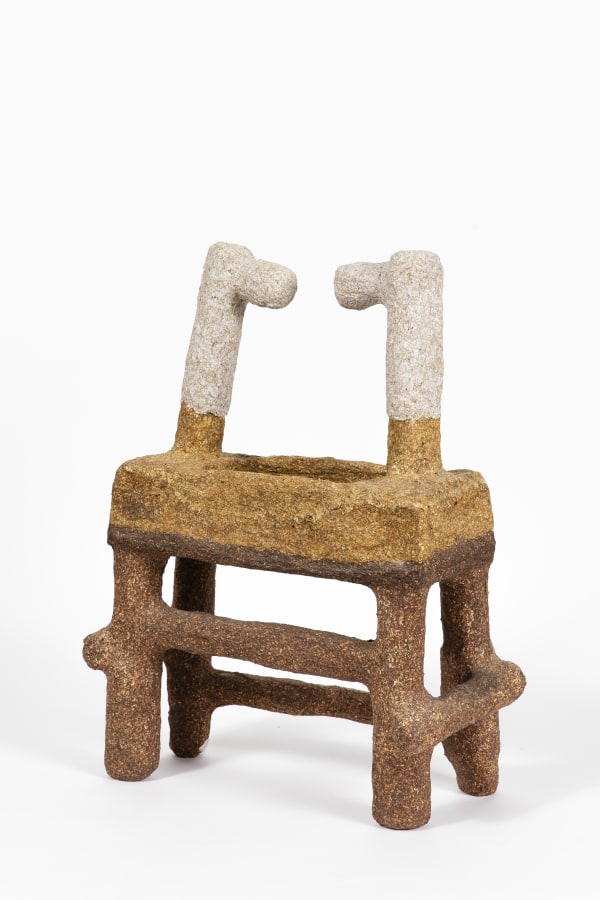We're delighted to announce that the Solomon R. Guggenheim Museum, New York, has recently acquired five works by Mohamed Ahmed Ibrahim.
In honour of outgoing director Richard Armstrong, 2023, Dancer Contessa (2020), Form in Object 1 (2018), Bearer (2020) and Standing Body 4 (2020) were purchased with funds contributed by the Middle Eastern Circle; Twin Blossom 2 (2019) was purchased with funds contributed by the Middle Eastern Circle with additional funds contributed by Mai Eldib.
About the Artist
Mohamed Ahmed Ibrahim (b.1962) is part of the UAE's first generation of contemporary artists from the late 1980s, an avant-garde scene that included Hassan Sharif, Abdullah Al Saadi, Hussein Sharif, and Mohammed Kazem. Ibrahim’s work has been inspired by a lifelong relationship with the environment of Khorfakkan, his place of birth, with the Gulf of Oman on one side and the Hajar Mountains on the other.
This deep connection to his local environment repeats itself throughout his studio practice, whether through his installations, drawings or objects, and the materials he has worked with for over three decades. His hand made objects are shaped like primitive tools, bones or parts of trees and appear to have been unearthed from some ancient den, rather than handcrafted. His works on paper reveal his own form of language - inscriptions, lines and abstract forms that are reminiscent of ancient cave drawings - marking time and memory through meditative repetition.
In honour of outgoing director Richard Armstrong, 2023, Dancer Contessa (2020), Form in Object 1 (2018), Bearer (2020) and Standing Body 4 (2020) were purchased with funds contributed by the Middle Eastern Circle; Twin Blossom 2 (2019) was purchased with funds contributed by the Middle Eastern Circle with additional funds contributed by Mai Eldib.
About the Artist
Mohamed Ahmed Ibrahim (b.1962) is part of the UAE's first generation of contemporary artists from the late 1980s, an avant-garde scene that included Hassan Sharif, Abdullah Al Saadi, Hussein Sharif, and Mohammed Kazem. Ibrahim’s work has been inspired by a lifelong relationship with the environment of Khorfakkan, his place of birth, with the Gulf of Oman on one side and the Hajar Mountains on the other.
This deep connection to his local environment repeats itself throughout his studio practice, whether through his installations, drawings or objects, and the materials he has worked with for over three decades. His hand made objects are shaped like primitive tools, bones or parts of trees and appear to have been unearthed from some ancient den, rather than handcrafted. His works on paper reveal his own form of language - inscriptions, lines and abstract forms that are reminiscent of ancient cave drawings - marking time and memory through meditative repetition.
July 5, 2024




